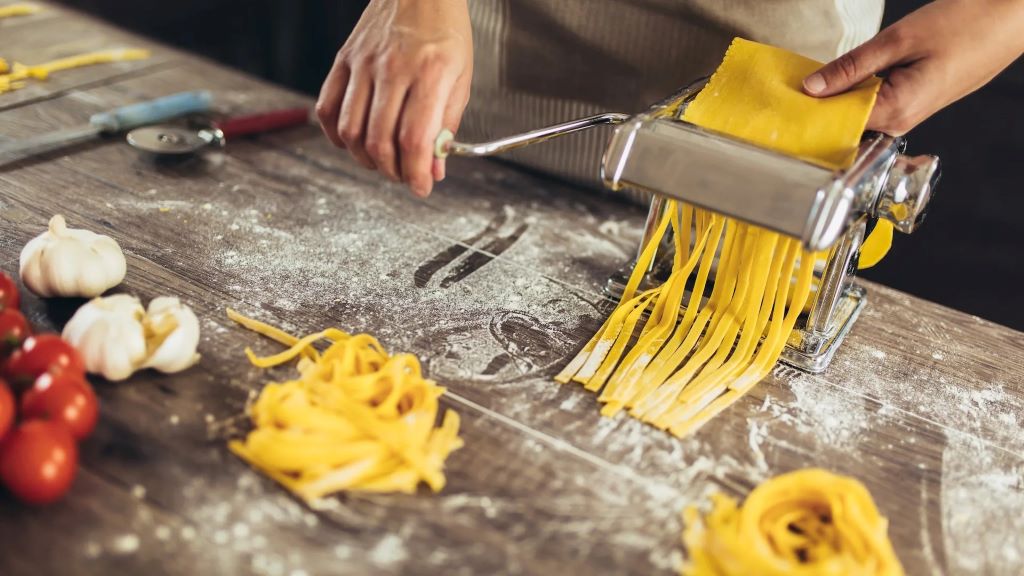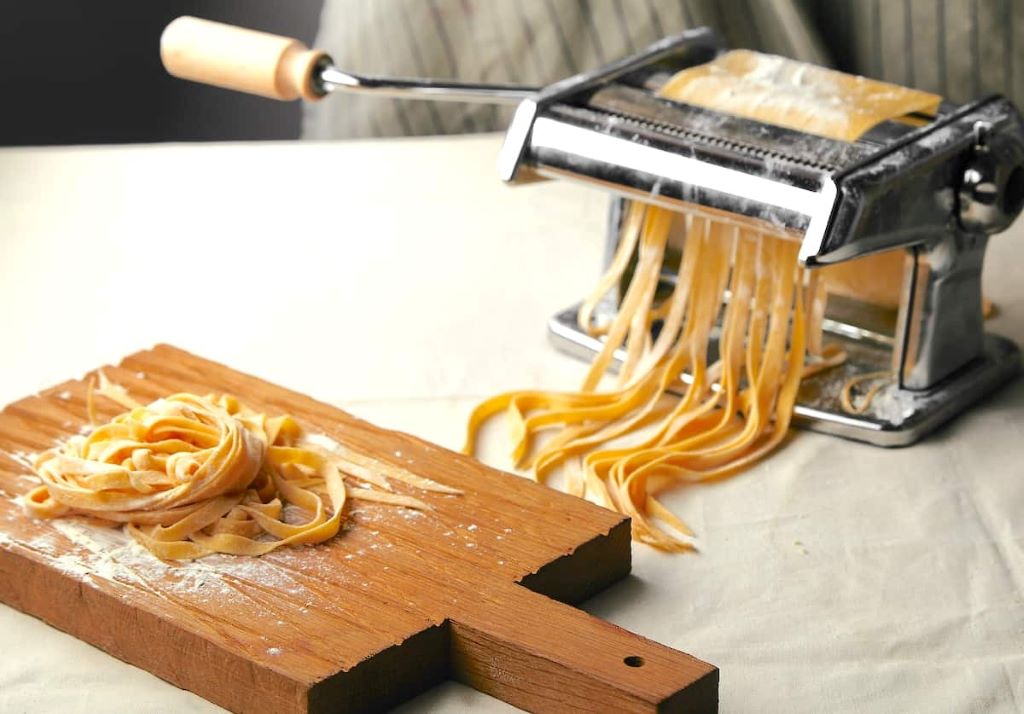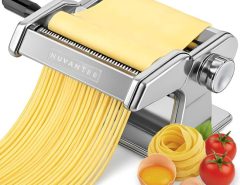Making fresh pasta at home brings immense satisfaction and incredible flavors to your kitchen. However, many home cooks unknowingly damage their pasta machines through improper cleaning techniques. These mistakes can lead to rust, broken components, and compromised pasta quality.
Cleaning your pasta machine correctly extends its lifespan significantly. Additionally, proper maintenance ensures consistent performance and food safety. This comprehensive guide reveals seven critical mistakes people make when cleaning their pasta makers. Furthermore, you’ll discover professional techniques that preserve your investment while maintaining optimal functionality.
Understanding Your Pasta Machine Components Before Cleaning
Modern pasta machines contain delicate mechanisms that require specific care approaches. Therefore, understanding each component helps prevent costly cleaning mistakes. Most machines feature stainless steel rollers, adjustment knobs, and sometimes cutting attachments.
The roller mechanism represents the most crucial part of your pasta machine. However, this component also faces the highest risk during cleaning processes. Additionally, many machines include removable parts that need individual attention during maintenance routines.
Mistake 1: Using Water Directly on the Machine Body
Many people assume washing pasta machines like regular kitchen appliances works perfectly. However, this represents one of the most damaging mistakes possible. Water penetrates internal mechanisms, causing immediate rust formation and long-term structural damage.
According to research from the American Culinary Federation, improper moisture exposure reduces pasta machine lifespan by approximately 60%. Therefore, avoiding direct water contact protects your investment substantially. Instead, use damp cloths for external cleaning while keeping water away from mechanical components.
The internal gears and springs cannot handle moisture exposure without significant consequences. Additionally, trapped water creates breeding grounds for bacteria and mold growth. Furthermore, electrical components in motorized models face immediate damage from water contact.

Mistake 2: Forgetting to Remove All Dough Residue Before Storage
Leaving dough remnants inside your pasta machine creates multiple problems over time. However, many users overlook this crucial step after completing their pasta-making sessions. Dried dough becomes cement-like, making future removal extremely difficult and potentially damaging.
Flour particles absorb moisture from air, creating sticky masses that interfere with roller operations. Therefore, thorough residue removal prevents operational issues and maintains smooth functionality. Additionally, food particles attract pests and create unsanitary conditions within your machine.
Professional chefs recommend immediate cleaning after each use to prevent dough hardening. Furthermore, using proper removal techniques preserves roller surfaces while ensuring complete cleanliness. This practice significantly extends machine life and maintains consistent pasta quality.
Mistake 3: Using Harsh Chemical Cleaners and Abrasive Materials
Commercial kitchen cleaners contain chemicals that corrode pasta machine surfaces and internal components. However, many home cooks use these products thinking they provide superior cleaning results. This mistake leads to permanent damage and potential food contamination issues.
Steel wool and abrasive scrubbers scratch roller surfaces, creating grooves that trap food particles. Therefore, avoiding harsh materials preserves smooth rolling surfaces essential for perfect pasta thickness. Additionally, scratched surfaces become increasingly difficult to clean over time.
Natural cleaning alternatives work effectively without causing damage to delicate machine components. Furthermore, gentle cleaning methods maintain the precision engineering that ensures consistent pasta results. Simple soap solutions and soft brushes provide adequate cleaning power without harmful side effects.
Mistake 4: Disassembling Parts That Should Remain Intact
Overzealous cleaning often leads people to disassemble pasta machine components unnecessarily. However, many parts require professional tools and expertise for proper reassembly. This mistake frequently results in misaligned rollers and compromised functionality.
Manufacturer instructions clearly specify which components users can safely remove for cleaning purposes. Therefore, following these guidelines prevents accidental damage and maintains warranty coverage. Additionally, improper disassembly often leads to lost screws and missing parts.
Some internal adjustments require precise calibration that home users cannot achieve without specialized equipment. Furthermore, attempting unauthorized disassembly voids warranties and creates expensive repair situations. Sticking to recommended cleaning procedures ensures optimal performance and longevity.
Mistake 5: Storing the Machine While Still Damp or Dirty
Moisture retention during storage creates ideal conditions for rust formation and bacterial growth. However, many users store their pasta machines immediately after cleaning without proper drying. This mistake significantly reduces equipment lifespan and creates health hazards.
Complete air drying prevents moisture-related damage while ensuring safe storage conditions. Therefore, allowing adequate drying time protects your investment and maintains food safety standards. Additionally, clean storage prevents odor development and pest attraction.
Professional kitchens implement strict drying protocols before equipment storage to prevent contamination issues. Furthermore, proper storage techniques maintain machine precision and ensure consistent performance over time. Taking extra drying time saves money on repairs and replacements.
Mistake 6: Applying Oil or Lubricants to Clean Rollers
Adding oils or cooking sprays to pasta machine rollers attracts dust and food particles. However, many people believe lubrication improves roller performance and prevents sticking. This mistake creates sticky surfaces that compromise pasta quality and machine functionality.
Food-grade lubricants belong only in specific mechanical areas designed for such applications. Therefore, keeping rollers completely clean and dry ensures optimal pasta release and prevents contamination. Additionally, oil residues affect pasta texture and create cleaning difficulties.
Properly maintained pasta machines operate smoothly without additional lubrication on food-contact surfaces. Furthermore, manufacturer specifications clearly indicate where lubrication is appropriate and necessary. Following these guidelines maintains both performance and food safety standards.
Mistake 7: Ignoring Regular Maintenance Schedule and Deep Cleaning
Sporadic cleaning creates accumulated buildup that becomes increasingly difficult to remove over time. However, many users only clean their pasta machines when problems become obvious. This reactive approach leads to permanent damage and costly repairs.
Establishing regular maintenance routines prevents minor issues from becoming major problems. Therefore, consistent care maintains optimal performance and extends equipment lifespan significantly. Additionally, preventive maintenance costs far less than repair or replacement expenses.
According to the National Restaurant Association’s equipment maintenance studies, regular cleaning schedules reduce appliance failures by 75%. Furthermore, proper maintenance preserves warranty coverage and ensures consistent pasta quality. Implementing structured cleaning routines protects your investment while maintaining food safety standards.

Professional Tips for Proper Pasta Machine Maintenance
Essential Cleaning Supplies You Need
- Soft-bristled brush or old toothbrush
- Clean, lint-free cloths
- Mild dish soap solution
- Wooden or plastic scraper
- Compressed air canister (optional)
Step-by-Step Cleaning Process
Start by removing all removable parts according to manufacturer instructions. However, never force components that resist easy removal. Clean each piece separately using gentle soap solutions and soft brushes.
Wipe external surfaces with slightly damp cloths, avoiding water contact with mechanical areas. Therefore, focus on removing flour dust and fingerprints without introducing moisture. Additionally, pay special attention to adjustment knobs and handle areas.
Storage Best Practices
Ensure complete dryness before storing your pasta machine in cool, dry locations. However, avoid extreme temperature changes that can affect metal components. Cover the machine with clean cloths to prevent dust accumulation while allowing air circulation.
Common Signs Your Pasta Machine Needs Professional Service
Unusual noises during operation indicate internal problems requiring professional attention. However, many issues result from improper cleaning rather than mechanical failure. Sticky rollers, uneven pasta thickness, or difficulty adjusting settings suggest maintenance problems.
Professional servicing restores optimal performance while identifying potential issues before they become expensive. Therefore, annual professional maintenance protects your investment and ensures consistent results. Additionally, certified technicians can perform deep cleaning procedures beyond home capabilities.
Conclusion
Avoiding these seven critical mistakes when cleaning your pasta machine ensures years of reliable performance. Proper maintenance techniques protect your investment while maintaining food safety and pasta quality standards. Remember that gentle cleaning methods work more effectively than harsh approaches.
Regular maintenance schedules prevent major problems while preserving optimal functionality. Therefore, implementing these professional techniques saves money on repairs and replacements. Additionally, well-maintained pasta machines produce consistently superior results that justify the investment. Related Topics: Cleaning and Maintaining Your Pasta Maker the Right Way
Start implementing these cleaning best practices today to extend your pasta machine’s lifespan. Furthermore, share this guide with fellow pasta enthusiasts to help them avoid these common mistakes. Your pasta machine will reward proper care with years of delicious homemade pasta.
Have you made any of these pasta machine cleaning mistakes? Share your experiences in the comments below and help other home cooks learn from your journey. Don’t forget to bookmark this guide and share it with your cooking friends!
Frequently Asked Questions
How often should I clean my pasta machine thoroughly?
Clean your pasta machine after every use for basic maintenance. However, perform deep cleaning monthly if you use it regularly, or before storage if used infrequently.
Can I put pasta machine parts in the dishwasher?
Most pasta machine parts are not dishwasher safe due to delicate mechanisms and potential rust issues. Always hand clean with gentle methods unless manufacturer specifically approves dishwasher use.
What should I do if my pasta machine develops rust spots?
Address rust immediately by gently removing it with fine steel wool, then clean thoroughly and dry completely. However, extensive rust may require professional restoration or replacement.
Is it safe to use compressed air for cleaning pasta machines?
Yes, compressed air effectively removes flour dust from hard-to-reach areas. However, use low pressure settings and ensure the machine is completely dry before storage.
How do I know if my pasta machine needs professional servicing?
Schedule professional service if you notice unusual noises, uneven pasta thickness, difficulty adjusting settings, or persistent cleaning issues despite proper maintenance efforts.





Leave a Reply